30 St Mary Axe, better known by its nickname the Gherkin, is London’s most instantly recognisable tower.
With 41 storeys, it is 180 meters (591 feet) tall.
The building has a total floor space of about 47,950 square meters (516,100 square feet).
Construction began in 2001 and the Gherkin was finished in December of 2003.
It was open to the public in April 2004.
Construction of the Gherkin was commissioned by Swiss Re, a reinsurance company.
The building was designed by famed architect Norman Foster of the Foster and Partners architectural firm.
The Gherkin is one of the city’s most widely recognised examples of contemporary architecture.
The shape of the tower is influenced by the physical environment of the city. The smooth flow of wind around the building was one of the main considerations.
The tower is aerodynamically designed to reduce wind load on the structure, whilst the lower part tapers so that wind wraps around the tower.
The building has a steel frame and a glass facade with diamond-shaped panels. The swirling striped pattern visible on the exterior is the result of the building’s energy-saving system which allows the air to flow up through spiraling wells.
The variation of the diameter of the plants is significant, measures 49 meters (161 feet) at the base, 56.5 meters (185 feet) at the widest part, tapering to 26.5 meters (87 feet) on the top floor, which is what gives it the appearance of “rocket” or “cucumber” as Londoners have been baptized.
On the street level, the Gherkin’s base is well integrated with an open public plaza. Huge white X braces create a dramatic entrance.
At the summit is a club room that offers a spectacular 360-degree panorama across the capital.
A restaurant operates on the 39th floor, and private dining rooms on the 38th.
There are 18 passenger lifts in the building. 378 people can be vertically transported through the building at speeds up to 6 meters per second at any time.
There are 1,037 steps in each of the building’s stairwells.
Over 35 kilometers (22 miles) of steel were used in the building’s construction.
7,429 panes of glass were used – the equivalent to three football pitches.
There are 792 mechanised windows that can open in the lightwells.
Each floor rotates 5 degrees from the one below.
Despite its curved shape, the building uses only one piece of curved glass – the lens right at the top.
The 16th floor is the largest at 1,816 square meters (19,547 square feet).
There are nine aircraft warning lights that glow red as it gets dark to alert planes overhead.
The building uses energy-saving methods, which allow it to use half the power that a similar tower would typically consume.
Since its completion, the building has won a number of awards for architecture including the Stirling Prize, the London Region Award, and the Emporis Skyscraper Award.
The Gherkin began as a much larger building that was dubbed the “Millennium Tower” also designed by Foster and Partners. At 92 floors and 386 meters (1,266 feet), it would have been the tallest building in Europe. However, Heathrow Airport objected because it would create problems for the airport’s flight plans and others on the grounds that such a tall building would be out-of-scale with the City of London.
The Gherkin stands on the former sites of the Baltic Exchange and Chamber of Shipping, which were extensively damaged in 1992 by the explosion of a bomb placed by the Provisional IRA in St Mary Axe, the street from which the tower takes its name.
The body of a Roman woman was found during the Gherkin’s construction. The body was kept in the Museum of London and then re-buried at the foot of the building, once it was finished.
On 21 February 2007, IVG Immobilien AG and UK investment firm Evans Randall completed their joint purchase of the building for £630 million, making it Britain’s most expensive office building. Swiss Re booked a gain of more than £300 million from the sale.
In November 2014, the Gherkin was purchased for £700 million by the Safra Group, controlled by the Brazilian billionaire Joseph Safra.
The building featured in recent films such as Harry Potter and the Half Blood Prince, Russell Crowe’s A Good Year, Sharon Stone’s Basic Instinct 2, and Woody Allen’s Match Point and, rechristened the Spirit of London, became the spaceship centrepiece of Keith Mansfield’s 2008 novel Johnny Mackintosh and the Spirit of London.
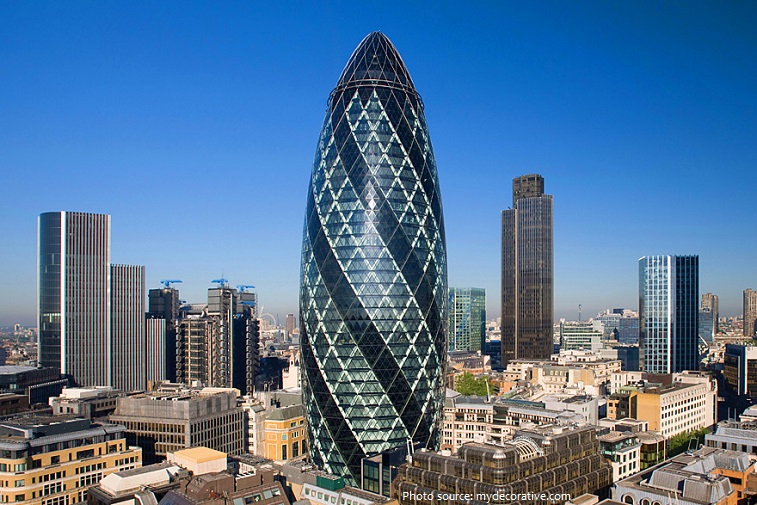
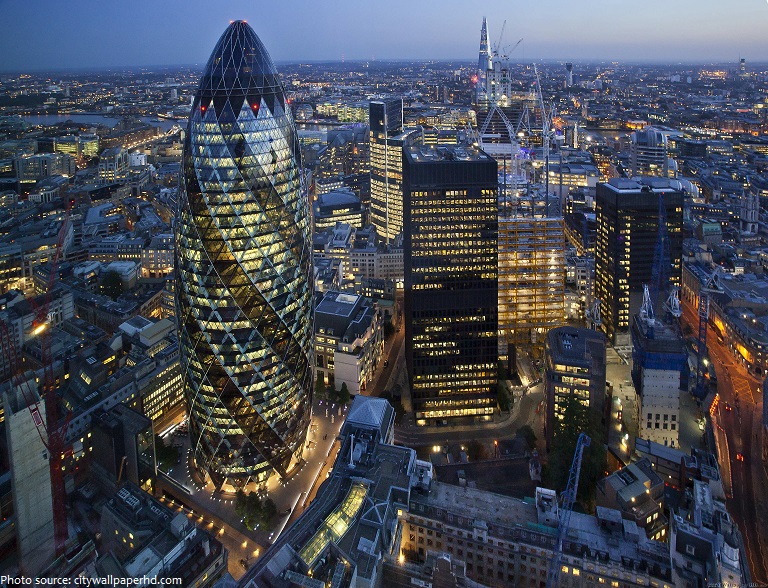
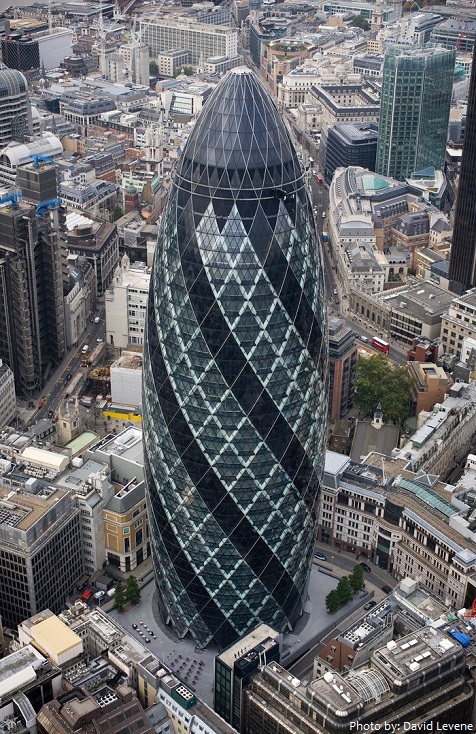
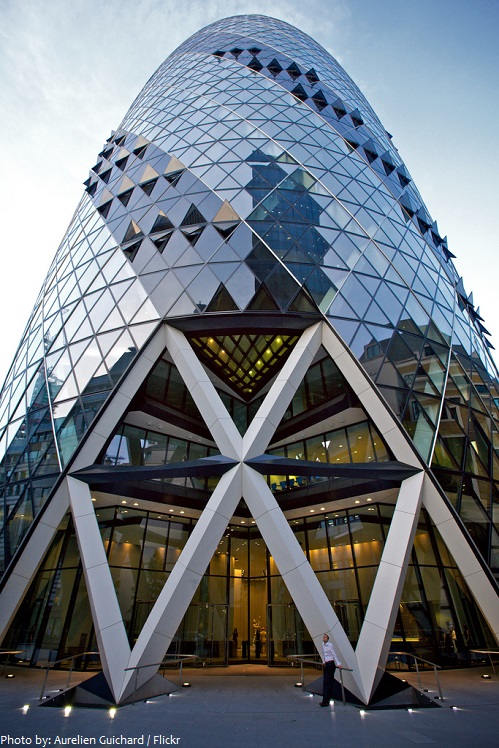
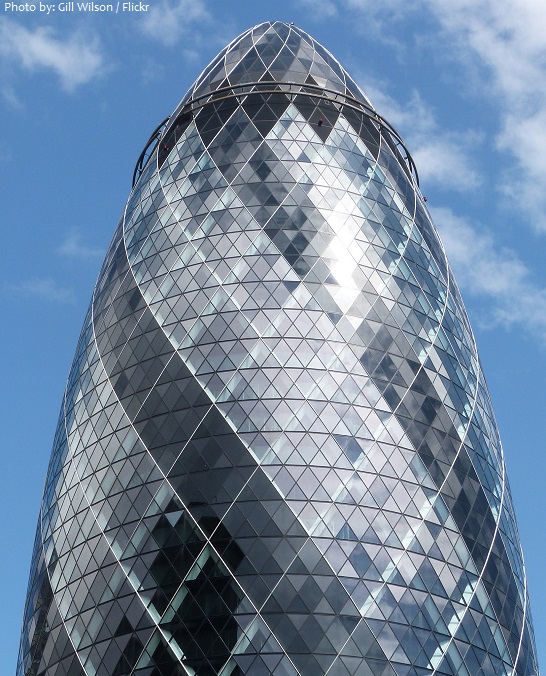

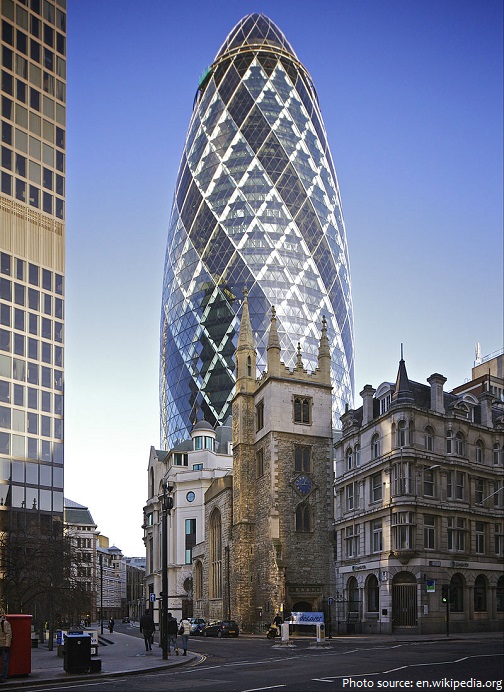
Comments are closed.